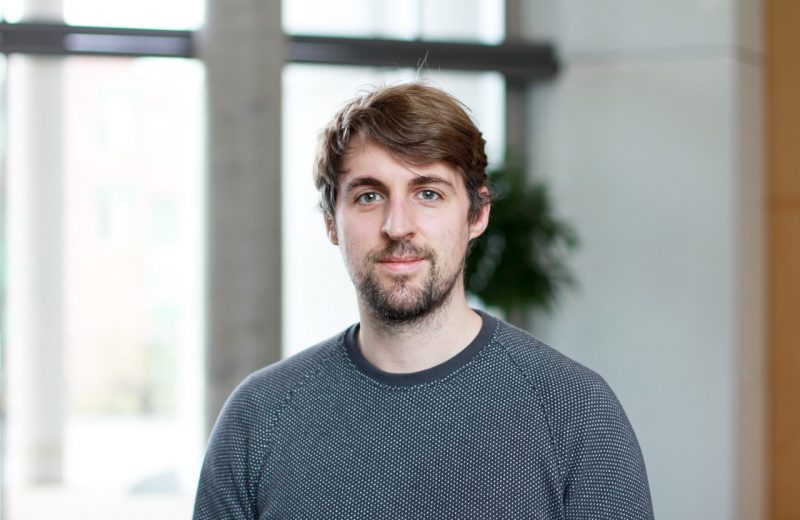Dr Michael Grange has joined the Rosalind Franklin Institute as the new electron cryo-tomography (cryo-ET) group leader.
The cryo-ET project at The Franklin will help visualise molecular structures at the atomic level within a cell or a group of cells. The development of this technology is funded by Wellcome through the Electrifying Life Sciences grant, read more about this grant here.
Dr Grange said, “I am thrilled to have joined The Franklin. It is a great opportunity to join a forward-looking institute with an exciting vision.”
Advances in cryo-ET that enable imaging of thicker samples will allow the group to begin studying organoids and tissues in situ. Dr Grange’s group will focus on imaging neurons, specifically focusing on the transport of vesicles from the cell body of neurons into the axon and the organisation of the cytoskeletal machinery responsible for this.
Better imaging of structures within an axon are crucial for understanding and developing treatments for conditions such as Parkinson’s and Alzheimer’s disease. These complex diseases can arise when misfolded proteins form toxic aggregates inside nerve cells or disrupt the internal transport machinery. These factors stop neurons from functioning, causing them to lose connection with surrounding neurons and die. A better understanding of protein structures involved in the maintenance of proper neuron organisation could therefore potentially lead to treatments for these diseases.

Prior to joining The Franklin, Dr Grange was part of the Raunser lab at the Max Planck Institute of Molecular Physiology and was a recipient of the prestigious EMBO fellowship. During this time, he aided in developing high-throughput workflows for cryoET and focus ion beam (FIB) milling; a technique that opens a window into the interior of cells and tissues. The ability to thin samples efficiently with minimal artefacts and contamination is important as this leads to better visualisation subsequently of cellular features via cryoET for structure determination. Using these approaches, he investigated the structure and architecture of isolated mammalian muscle, recently published in Cell, and human stem-cell-derived cardiomyocytes, both of which are crucial in understanding our knowledge of muscle function and disease.
He has used the cryo-ET technique throughout this career, starting during his PhD where he used FIB milling, cryo-ET and super-resolution microscopy to observe the trafficking and egress of virus progeny within cells. These techniques were the only methods that could reveal how herpesviruses cross the nuclear membrane inside the cell in molecular detail.
Dr Grange said, “I am driven to understand the structures of proteins within the context of their native environment, because it is only once you know this can you fully understand how they work and impact their surroundings. We can compare protein structures in a normal setting to what happens when something has gone wrong with the protein, such as in disease, to gain understanding of how disease can develop. Once we have this information, we can also then investigate the impact of drugs on a protein linked to disease and thus how we may able to treat it.
Cryo-ET is a brilliant technique that allows us to image molecules directly inside cells. It has been amazing to see the range of application of the technique expand and how much the resolution of structures in-situ has improved since I started using it during my PhD, and I am excited to see where this technology will take us in the future.”